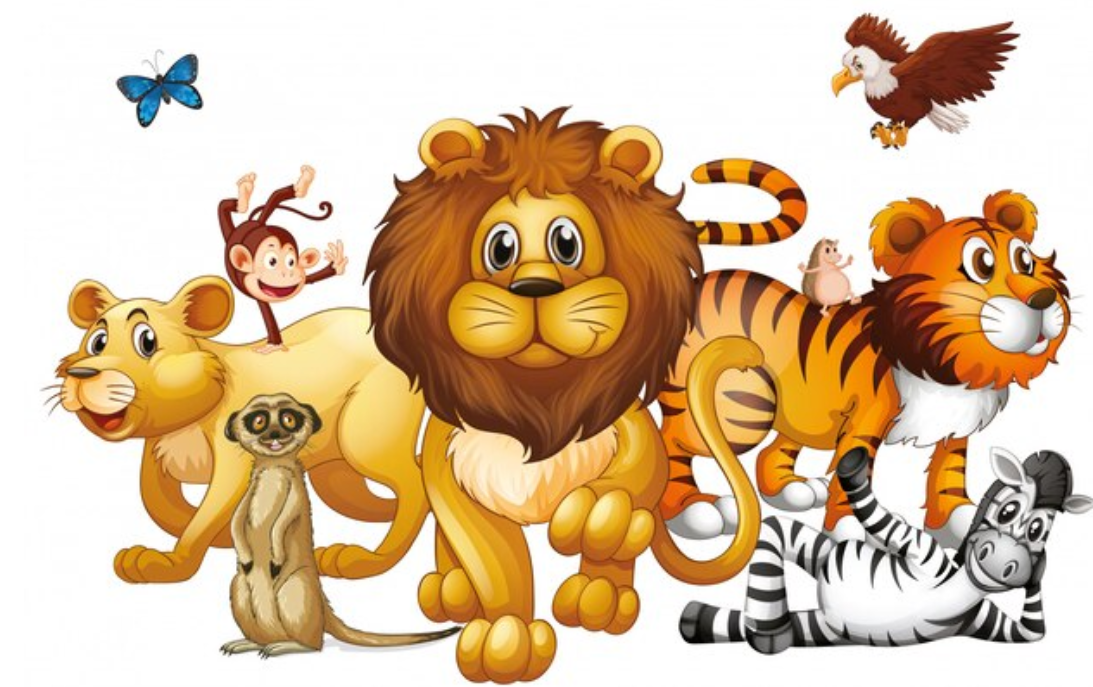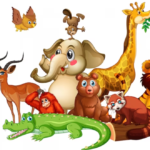Significance of understanding animal life processes in relation to the animal kingdom
Like us, animals are amazing beings with a variety of life processes. Their existence, development, and reproduction depend on these mechanisms. Animals have different methods for completing basic life functions, such as finding food and getting rid of waste. Let’s examine in more detail the many stages of an animal’s existence and how they affect its general health.
Digestion in animals and its role in breaking down food for energy and nutrients
All living things, including animals, need nutrition to survive. Animals need different diets depending on their size, species, and habitat. While some animals are carnivores and graze mostly on other creatures, others are herbivores, meaning they consume mostly vegetation. Some animals and plants are consumed by omnivores. Animals have many ways of getting food as well as consuming it. For instance, although insects have specific mouthparts for sucking or eating, birds utilize their beaks to gather food. Animals’ digestive systems are also well-suited to consume and absorb nutrients from their diet.
Different respiratory systems found in animals, such as lungs, gills, and tracheal systems
In order to support cellular respiration, respiration is the act of exchanging gases, mostly carbon dioxide and oxygen. The respiratory systems of different animals differ based on factors such as environment and size. Gas exchange is made possible via a network of microscopic tubes known as tracheae found in some species, including insects. Others, like humans, on the other hand, have specific organs for breathing, such as the lungs. Fish and other aquatic creatures may get oxygen from the water with the aid of their gills. In any situation, breathing is essential to giving the body the energy it needs to carry out everyday tasks.
Different types of circulatory systems found in animals, including open and closed circulatory systems
Blood and other fluids go throughout an animal’s body during circulation. There are several kinds of circulatory systems in animals, including closed and open systems. In open systems, the blood bathes the organs directly without being confined inside blood vessels. Closed systems, on the other hand, contain blood vessels that carry blood to various bodily sections. The removal of waste materials from the body and the delivery of hormones, nutrients, and oxygen to different organs and tissues depend on circulation.
Different excretory systems found in animals, such as kidneys, gills, and Malpighian tubules
The body rids itself of waste materials via excretion. Sweat, excrement, and urine are examples of waste that animals create that needs to be eliminated in order to keep their interior environments healthy. The kidneys, intestines, and sweat glands are a few examples of the organs that different animals have for eliminating waste. These organs control the body’s mineral and water balance in addition to filtering out dangerous toxins. Inappropriate excretion may cause illnesses and even death in animals.
Different methods of reproduction in animals, including sexual and asexual reproduction
For a species to survive, it is necessary for it to be able to create offspring. Animals reproduce in a variety of ways, including asexual and sexual. When two people mate sexually, they create kids with distinct characteristics. Asexual reproduction, on the other hand, uses a single organism and results in children that share the parent’s genetic makeup. The gestation duration and ways of mating also vary throughout animal species. A species’ continued existence is guaranteed via reproduction, which also keeps the environment in balance.

Growth and development in animals and their significance in the life cycle
In summary, the distinct and intricate life processes of animals are essential to their survival and well-being. These procedures—which range from getting food to getting rid of waste—are necessary to keep the interior environment healthy. Animals have successfully evolved to carry out these procedures despite their variances, guaranteeing their existence for millions of years. Our admiration and comprehension of the amazing animals that inhabit our world grow as we learn more about these processes.
| QUESTION | ANSWER |
Which aquatic animal has a reputation for being able to develop new arms? | Starfish |
What is a mayflay’s lifespan? | a few hours or a whole day |
Which animal among mammals has the longest lifespan? | Whale Bowhead |
How big is a panda at birth? | At birth, baby pandas weigh about 100 grams, or roughly the same as a stick of butter. |
How much time do seahorses spend mating? | for eternity |
Which gender do clownfish all have? | Men |
The bulk of a butterfly’s taste buds are found where? | Moving forward |
How much dry land time can a Galápagos tortoise tolerate? | A year |
What is the name given to the group of owls? | Parliament Stare Wisdom |
What is the name given to the group of oxen? | Drove Herd Nye Team Yoke |
What is the name given to the group of pandas? | Amalgamation |
What is the name given to the group of penguins? | Rookery |
What is the name given to the group of pigs? | Sounder |
What is the name given to the group of polecats? | Chine |
What is the world’s slowest animal? | Sloths with three toes |
How long is a snail able to sleep for? | Three |
Which animal lacks voice cords? | Giraffes |
How many eyes are there on a honeybee? | Five |
What’s the name of a female donkey? | Jenny |
How many hearts are there in an octopus? | Three |
What kind of animal is a giant panther? | hare |
What is the name given to the group of porcupines? | Herd Pod School |
What is the name given to the group of rabbits? | Colony Drove Leash Nest Trace Warren |
What is the name given to the group of raccoons? | Gaze Nursery |
What is the name given to the group of rats? | Horde Mischief |
Where is the heart of a shrimp located? | Within its head |
Which animal poops in the form of a cube? | Wombat |
What material is used to make a rhino’s horn? | Keratin |
What kind of penguin is the tallest? | The Emperor Penguins |
Which animal in the animal world has the largest eyes? | Giant squid |
How long does a sloth take to process its meal? | thirty days |
How many separate sections make up a cow’s stomach? | Four |
How many bones are there in a shark? | Not one |
What’s the term for a bunch of kangaroos? | A group of |
What kind of monkey is the heaviest? | Mandrill |
What kind of animal is a fer-de-lance? | Serpent |
What is the name given to the group of reindeer? | Herd |
What is the name given to the group of rhinoceros? | Crash |
What is the name given to the group of sea lions? | Pod Colony Crash Flock Harem Herd Rookery Team Hurdle |
What is the name given to the group of seals? | Herd Pod Rookery Harem |
What hue is a mature mute swan’s beak? | Orange |
After hatching, what is the first food a caterpillar consumes? | A caterpillar up close inside its own shell |
How many pounds is the largest aquatic bird in North America, the trumpeter swan? | Almost thirty pounds |
What is North America’s largest herbivore? | The American Bison |
.What is the world’s tiniest bird? | Hummingbird bee |
What is the only flying mammal? | Bats |
Which animal is called the “king of the jungle”? | 35.Lion |
How many clams can a walrus consume in a day? | Five thousand claims |
What’s the name for a gang of crows? | Homicide |
Which mammal is incapable of walking backwards? | Kangaroo |
What land animal is the fastest? | Cheetah |


